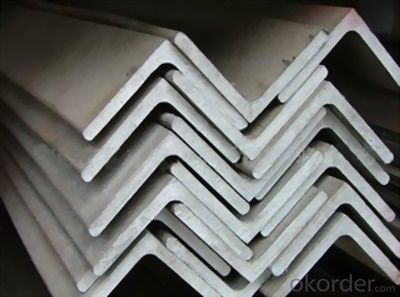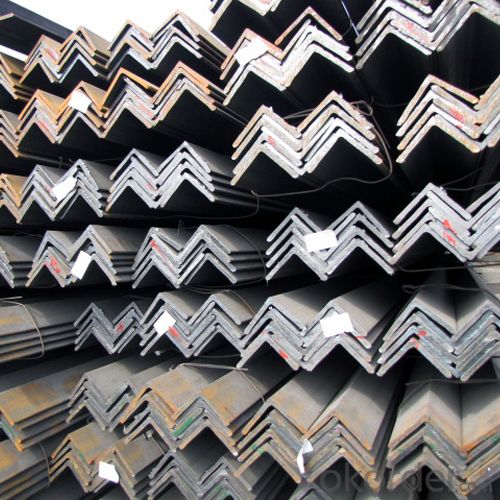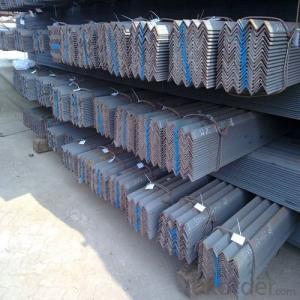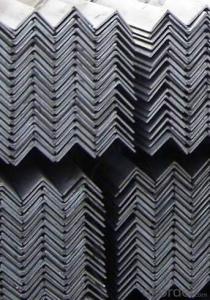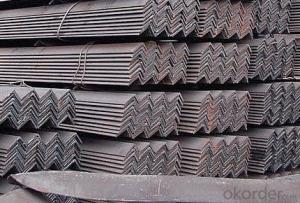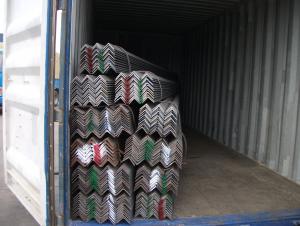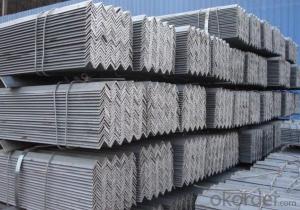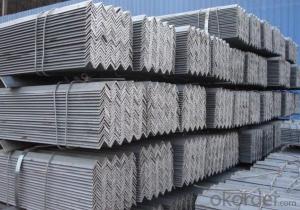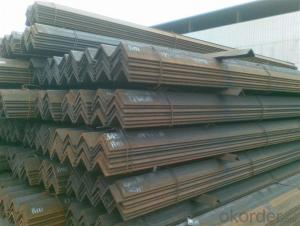JIS Standarder High Quality Angle Steel
- Loading Port:
- Tianjin
- Payment Terms:
- TT or LC
- Min Order Qty:
- 25 m.t.
- Supply Capability:
- 2000 m.t./month
OKorder Service Pledge
OKorder Financial Service
You Might Also Like
Product Description:
OKorder is offering Angle Steel great prices with worldwide shipping. Our supplier is a world-class manufacturer of steel, with our products utilized the world over. OKorder annually supplies products to European, North American and Asian markets. We provide quotations within 24 hours of receiving an inquiry and guarantee competitive prices.
Product Applications:
According to the needs of different structures, Angle can compose to different force support component, and also can be the connections between components. It is widely used in various building structures and engineering structures such as roof beams, bridges, transmission towers, hoisting machinery and transport machinery, ships, industrial furnaces, reaction tower, container frame and warehouse etc.
Product Advantages:
OKorder's Angle Steelare durable, strong, and resist corrosion.
Main Product Features:
· Premium quality
· Prompt delivery & seaworthy packing (30 days after receiving deposit)
· Corrosion resistance
· Can be recycled and reused
· Mill test certification
· Professional Service
· Competitive pricing
Product Specifications:
1. Invoicing on theoretical weight or actual weight as customer request
2. Length: 6m, 9m, 12m as following table
3. Sizes
Sizes: 25mm-250mm | ||
a*t | ||
25*2.5-4.0 | 70*6.0-9.0 | 130*9.0-15 |
30*2.5-6.6 | 75*6.0-9.0 | 140*10-14 |
36*3.0-5.0 | 80*5.0-10 | 150*10-20 |
38*2.3-6.0 | 90*7.0-10 | 160*10-16 |
40*3.0-5.0 | 100*6.0-12 | 175*12-15 |
45*4.0-6.0 | 110*8.0-10 | 180*12-18 |
50*4.0-6.0 | 120*6.0-15 | 200*14-25 |
60*4.0-8.0 | 125*8.0-14 | 250*25 |
Note:
1. According to national standard (GB) for our products, if not, supply according to national standards (GB) or agreement.
2. We can not only provide electric furnace +LF+VD and electro-slag re-melting (ESR)steel forging materials, but also forging products of piece, bar, etc.
3. Our company is equipped with roll equipment and can provide our customers with roll billets or finished.
4. Please send us your detailed specifications when inquire. We will reply to you ASAP.
Production Flow of High Quality Round Bar
The common processes are preheated forging quenching, dual refinement solution process, cooling quenching and isothermal quenching. We use heat treatment for dual refinement solution process. The main measures process is high temperature solution and refinement cycle. High temperature solution can improve the carbide morphology and particle size. The aim is to make the loop refinement ultrafine austenite grains.
FAQ:
Q1: Why buy Materials & Equipment from OKorder.com?
A1: All products offered byOKorder.com are carefully selected from China's most reliable manufacturing enterprises. Through its ISO certifications, OKorder.com adheres to the highest standards and a commitment to supply chain safety and customer satisfaction.
Q2: How do we guarantee the quality of our products?
A2: We have established an advanced quality management system which conducts strict quality tests at every step, from raw materials to the final product. At the same time, we provide extensive follow-up service assurances as required.
Q3: How soon can we receive the product after purchase?
A3: Within three days of placing an order, we will begin production. The specific shipping date is dependent upon international and government factors, but is typically 7 to 10 workdays.
Images:
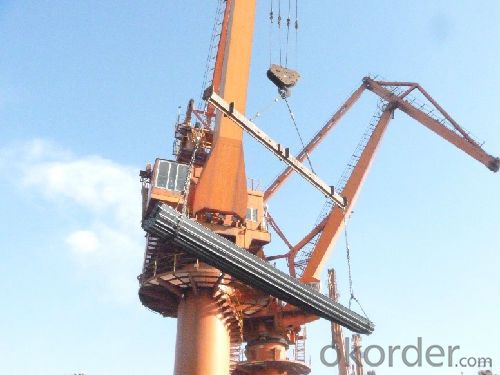
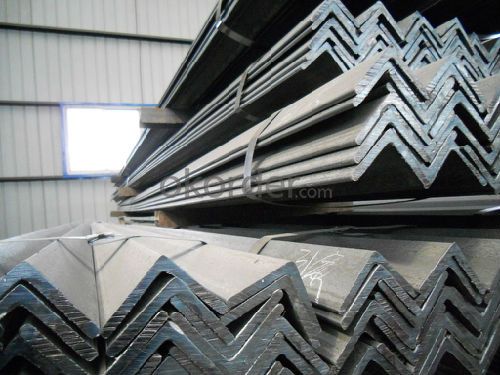
- Q: Can steel angles be customized or fabricated to specific requirements?
- Steel angles have the ability to be customized or fabricated according to specific requirements. With their versatility, steel angles can easily be modified to meet a variety of specifications and applications. Various fabrication processes, such as cutting, drilling, welding, and bending, can be employed to tailor steel angles to the desired shape, size, and dimensions. This enables the creation of steel angles with specific lengths, thicknesses, and angles, satisfying the unique demands of construction or engineering projects. Customized steel angles find utility in numerous applications, including structural framing, supports, brackets, reinforcements, and architectural designs. In summary, the flexibility of steel angles in customization and fabrication makes them highly suitable for meeting a wide range of construction and industrial needs.
- Q: What are the standard specifications for steel angles?
- The standard specifications for steel angles are defined by various organizations, including the American Society for Testing and Materials (ASTM) and the International Organization for Standardization (ISO). These specifications ensure that steel angles meet certain quality and dimensional requirements. One of the most commonly used specifications for steel angles is ASTM A36, which covers carbon structural steel shapes. According to this specification, steel angles should have a minimum yield strength of 36,000 psi (pounds per square inch) and a minimum tensile strength of 58,000 to 80,000 psi. The dimensions of the angles are specified in terms of leg length, thickness, and angle size, which can range from 1/2 inch to 8 inches. Another widely used specification is ASTM A572, which covers high-strength low-alloy structural steel shapes. Steel angles under this specification should have a minimum yield strength of 50,000 psi and a minimum tensile strength of 65,000 to 80,000 psi. The dimensions of the angles are similar to ASTM A36. ISO also provides standards for steel angles, such as ISO 657-1 and ISO 657-5. These standards specify dimensions, tolerances, and technical requirements for hot-rolled steel angles. ISO 657-1 covers general purpose angles, while ISO 657-5 covers unequal leg angles. In addition to these standards, steel angles may also be subject to specific requirements based on their intended application or industry. For example, angles used in construction or engineering projects may need to meet additional specifications set by local building codes or design guidelines. It is important to consult the relevant standards and specifications to ensure that steel angles meet the necessary requirements for a particular application, as these standards help ensure the quality, strength, and dimensional accuracy of the angles.
- Q: What does "L125*8" stand for in steel structures?
- Angle steel is divided into equal angle steel and unequal angle steel. The expression of the equal angle steel model is b*d, in which B is the unilateral width of the equilateral angle steel, and the D is the thickness, and the unit is MM. Unequal angles are named by the ratio of the length to the width of a centimeter and the width of a short edge. Therefore, the L125*8 represents an equilateral angle steel beam with a unilateral width of 125 and a thickness of 8. I hope this problem can be solved for you.
- Q: What are the load-bearing capacities of different sizes and types of steel angles?
- The load-bearing capacities of different sizes and types of steel angles can vary depending on various factors such as the type of steel, size of the angle, and the specific application. Steel angles are commonly used in construction and engineering projects to provide structural support and stability. The load-bearing capacity of a steel angle is primarily determined by its cross-sectional area, which is influenced by the size and thickness of the angle. Larger and thicker steel angles generally have higher load-bearing capacities compared to smaller and thinner angles. The American Institute of Steel Construction (AISC) provides guidelines and tables that specify the allowable loads for various steel angles based on their dimensions and the type of steel used. These tables consider factors such as the angle's shape, length, and the orientation of the load. It is important to note that load-bearing capacities can also be influenced by the specific type of steel used in the angle. Different types of steel, such as carbon steel, stainless steel, or alloy steel, have varying mechanical properties that affect their load-bearing capabilities. For example, stainless steel angles tend to have higher load-bearing capacities and better corrosion resistance compared to carbon steel angles. It is recommended to consult engineering handbooks, structural design codes, or consult with a professional engineer to determine the specific load-bearing capacities of different sizes and types of steel angles for a particular application. These resources provide detailed information and calculations based on industry standards to ensure the safe and efficient use of steel angles in structural designs.
- Q: Can steel angles be used for pedestrian bridges or walkways?
- Yes, steel angles can be used for pedestrian bridges or walkways. Steel angles are commonly used in construction due to their strength, durability, and versatility. They can be easily fabricated and welded to create the desired structural elements for bridges and walkways. Steel angles provide excellent load-bearing capabilities, making them suitable for supporting pedestrian traffic. Additionally, the corrosion-resistant properties of steel make it an ideal choice for outdoor applications where exposure to weather elements is a concern. Overall, steel angles are a popular choice for pedestrian bridges and walkways due to their reliability and ability to meet the necessary structural requirements.
- Q: Can steel angles be used in the construction of hotels?
- Indeed, hotels can incorporate steel angles into their construction. Owing to their exceptional durability, strength, and adaptability, steel angles are frequently utilized in the field of construction. These versatile components serve various functions within hotel construction, including bolstering structural beams, fortifying concrete slabs, framing walls, and crafting architectural elements. By offering stability and structural integrity, steel angles prove to be excellent candidates for constructing towering hotels. Furthermore, their affordability and widespread availability render them a pragmatic option for hotel construction endeavors.
- Q: How do steel angles contribute to the overall aesthetics of a building?
- There are several ways in which steel angles can enhance the aesthetics of a building. First and foremost, their sleek and clean lines can give a contemporary touch to the structure, adding a sense of modern style. Moreover, the angular shape of steel angles can create captivating patterns and forms, bringing depth and dimension to the building's exterior. Additionally, architects can creatively employ steel angles to accentuate architectural features and introduce unique design elements. They can be integrated into the building's façade or used as decorative elements to draw attention to specific areas and generate visual interest. For instance, steel angles can be used to frame windows or doors, establishing a striking contrast with the surrounding materials. In combination with materials like glass or concrete, steel angles can also produce interesting shadows and reflections. This interplay of light and shadow imparts a dynamic and ever-changing quality to the building's appearance, resulting in a visually captivating effect. Furthermore, steel angles offer remarkable versatility and can be easily tailored to meet the specific design requirements of a building. They can be cut, bent, and welded into various shapes and sizes, enabling architects and designers to explore limitless possibilities in terms of form and composition. This design flexibility allows for the creation of unique structures that are visually appealing and stand out from the rest. In conclusion, steel angles play a pivotal role in enhancing the overall aesthetics of a building by providing a sleek and modern look, generating visually captivating patterns and forms, accentuating architectural features, creating intriguing shadows and reflections, as well as offering endless design possibilities. Their versatility and customization options make them an invaluable tool for architects and designers in creating visually captivating and aesthetically pleasing buildings.
- Q: Can steel angles be used for electrical conduits?
- No, steel angles cannot be used for electrical conduits as they are not designed or suitable for carrying electrical wiring. Electrical conduits are typically made of materials such as PVC, steel, or aluminum that are specifically designed to safely enclose and protect electrical wires.
- Q: What is angle flower? Is it the same as angle iron?
- Welded steel pipe, welded pipe, welded steel pipe, is the same meaning, also called welded steel pipe, seamless steel tube is compared with the. Seamed tube is made of steel plates or strips welded together. Because of the different manufacturing process, it can be divided into longitudinal welded pipe and spiral welded pipe.
- Q: How do steel angles contribute to architectural design?
- Steel angles contribute to architectural design in various ways. Firstly, they provide structural support and stability to buildings, allowing architects to create innovative and complex designs. Steel angles can be used to reinforce corners, edges, and joints, increasing the overall strength and durability of the structure. Additionally, steel angles can be strategically incorporated into the design to create visual interest and aesthetic appeal. They can be used as decorative elements, creating unique shapes and patterns that enhance the overall architectural style. Moreover, steel angles offer flexibility in construction, enabling architects to design buildings with open floor plans and large uninterrupted spaces. Overall, steel angles play a crucial role in architectural design by combining functionality, strength, and visual appeal.
Send your message to us
JIS Standarder High Quality Angle Steel
- Loading Port:
- Tianjin
- Payment Terms:
- TT or LC
- Min Order Qty:
- 25 m.t.
- Supply Capability:
- 2000 m.t./month
OKorder Service Pledge
OKorder Financial Service
Similar products
Hot products
Hot Searches



